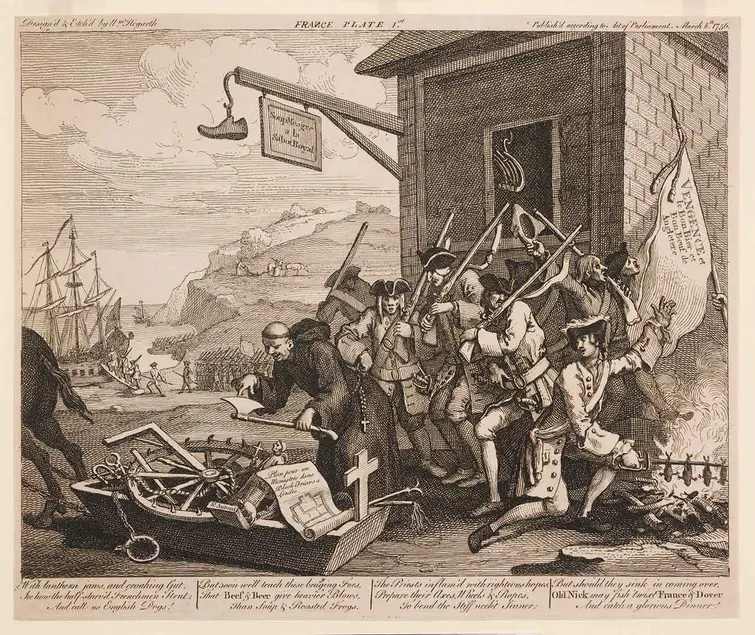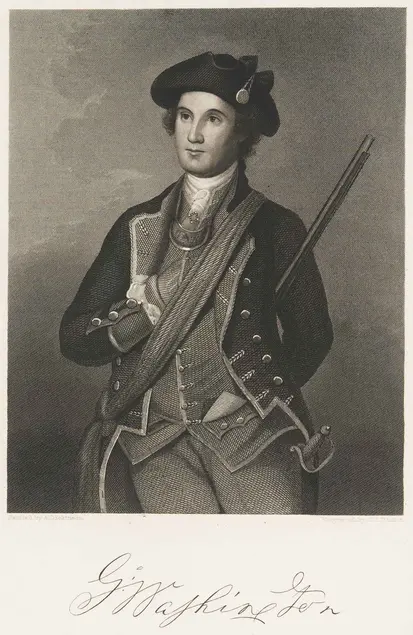A Clash of Empires: The Seven Years' War and British America

William Hogarth (1697–1764), The Invasion, March 1756. Huntington Library, Art Collections, and Botanical Gardens.

J. W. Steele (engraver), George Washington as the Colonel of the Virginia Militia, after the painting by Anson Dickinson, from Benson John Lossing, The Home of Washington and Its Associations (New York: W. A. Townsend, 1865). Huntington Library, Art Collections, and Botanical Gardens.


New Exhibition on the Seven Years' War Includes Items Displayed for the First Time
Some 20 years before “the shot heard ‘round the world” launched the American Revolution, a young Lt. Col. George Washington helped set a separate world conflict in motion. On May 28, 1754, a detachment of Virginia militia commanded by Washington ambushed a party of French soldiers in southwestern Pennsylvania, a territory claimed by both France and England. Today, Americans know the ensuing conflict as the French and Indian War, but the clash between empires soon drew into its vortex all major European powers in what is known more widely as the Seven Years’ War, with armies and navies fighting in North America, the West Indies, Europe, India, and Africa. Before the peace finally was achieved in 1763, a million men had lost their lives in what Winston Churchill famously called the first “world war.”
A new exhibition at The Huntington tells the story of a war too often described as a mere prelude to the revolution. “A Clash of Empires: The Seven Years’ War and British America,” opening April 24 and continuing through July 26 in the Library West Hall, will showcase approximately 70 items from the Library’s holdings that touch on the major events of the conflict. Manuscripts on display will include correspondence between military leaders, politicians, and other prominent figures (among them Washington and Benjamin Franklin) as well as diaries kept by foot soldiers. Other items will highlight examples of propaganda, pacifism, racial prejudice against Indians, and some of the earliest known instances of the violence and brutality of colonial warfare in America.
“The Huntington’s collections related to the Seven Years’ War are considered among the best, if not the best, in the country.” says Olga Tsapina, Norris Foundation Curator of American Historical Manuscripts. This will mark the first time the war has been the subject of a Huntington exhibition and thus the first time many items will be on public view.
To many people, the war is best known as the backdrop of James Fennimore Cooper’s The Last of the Mohicans. That novel, published in 1826, hinged on a famous battle—an English defeat in 1757 at Fort William Henry. While Cooper embellished many details, surviving documents show that facts are often more poignant than fiction. On display will be a handwritten message from British General Daniel Webb to the beleaguered Lt. Col. George Monro, explaining that no help would be forthcoming for Monro and his troops, who were under siege by French and Indian forces. The note still shows the creases made by Webb’s messenger, who had folded it and placed it in his boot, only to be killed before completing his mission. The missive was discovered by Indians and forwarded to French General Marquis de Montcalm while he was negotiating a surrender with Monro. “Montcalm produced the note with a flourish,” says Tsapina, “and Monro had no choice but to surrender.”
The exhibition places other major events of the war in a wider cultural context. For example, the 1755 British victory at Fort Beauséjour in Acadia (modern-day Nova Scotia) set the stage for one of the greatest tragedies to take place in North America: the expulsion of French Acadians from the region. The drastic military strategy, later called the Great Upheaval, would be echoed in later years by the forced removal of Indian tribes from their native lands. The war also included examples of notable diplomacy, including the cooperation between Quakers and Indians in Pennsylvania, which demonstrated some of the earliest examples of pacifism in American history.
The ultimate victory of the British forces united an empire on both sides of the Atlantic that seemed invincible. Yet the Seven Years War was more than a military contest: it was a clash of political cultures that transformed colonial society in profound ways and laid the foundations of the Revolutionary era that was to follow a little more than a decade later.
Related Programs
Olga Tsapina, Norris Foundation Curator of American Historical Manuscripts, will lead these special events relating to the exhibition:
“Ask the Curator”
Sun., April 25; Sun., May 30; and Sat., July 3, noon–3 p.m., Library, West Hall
Tsapina answers questions and conducts informal discussions about the exhibition with visitors. Free. No reservations required.
Lecture: “A Forgotten War:The Seven Years’ War and British America”
Wed., June 30, 7:30 p.m., Friends’ Hall, Free. No reservations required.
Curator Tour
Sat., July 10, 9–10:30 a.m., Library, West Hall, Members: $15, non-Members: $20.To register, call 626-405-2128.
Suggested Reading
Fred Anderson, Crucible of War: The Seven Years’ War and the Fate of Empire in British North America, 1754–1766 (New York: A. A. Knopf, 2000)
William M. Fowler, Empires at War:The French and Indian War and the Struggle for North America, 1754–1763 (New York:
Walker & Co., 2005)
Frank McLynn, 1759: The Year Britain Became Master of the World (New York: Grove Press, 2004)
Peter Rhoads Silver, Our Savage Neighbors: How Indian War Transformed Early America (W.W. Norton & Co., 2008)